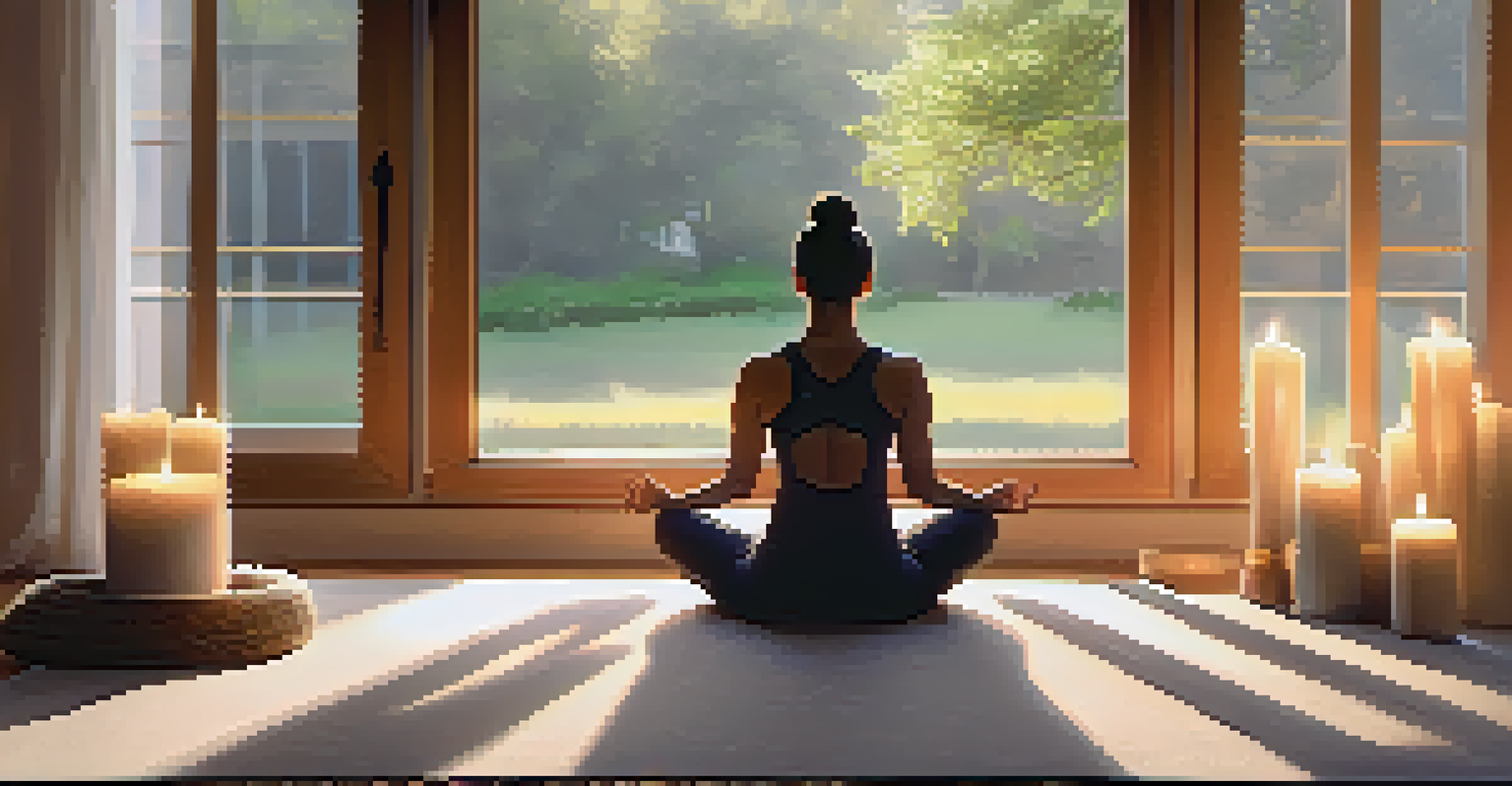Self-Care Practices to Cultivate Inner Peace

Understanding Inner Peace: What It Means and Why It Matters
Inner peace is a state of mental and emotional calmness, free from stress and anxiety. It’s like finding a serene oasis in the midst of life's chaos, where you can recharge and reflect. Cultivating this peace is crucial, not just for happiness but for overall well-being.
Peace comes from within. Do not seek it without.
When you experience inner peace, challenges seem less daunting, and solutions come more easily. It’s akin to standing firm amidst a storm, grounded and steady. By nurturing this state, you can improve not only your mental health but also your physical health, as stress-related ailments begin to fade.
In today's fast-paced world, prioritizing inner peace can feel like a luxury, but it’s essential. Think of it as an investment in your future self, one that pays dividends in clarity, creativity, and resilience. Embracing this practice can transform your daily life.
Mindfulness Meditation: A Gateway to Tranquility
Mindfulness meditation is a powerful tool for cultivating inner peace. By focusing your attention on the present moment, you train your mind to let go of distractions and worries. Imagine your thoughts as clouds passing in the sky—acknowledge them, then let them drift away.

Practicing mindfulness doesn't require a lot of time; even a few minutes a day can make a significant difference. You can start with simple breathing exercises or guided meditations available through apps and online resources. As you develop this habit, you might find that your responses to stress become more measured and calm.
Inner Peace Enhances Well-Being
Cultivating inner peace is vital for improving both mental and physical health, making life's challenges feel more manageable.
Incorporating mindfulness into your daily routine can be transformative. Whether you're sipping your morning coffee or taking a walk, focus on the sensations and surroundings. This practice helps create a sense of grounding, allowing inner peace to flourish.
Journaling: Unleashing Your Thoughts for Clarity
Journaling is an excellent self-care practice that helps clarify your thoughts and emotions. It's like having a conversation with yourself on paper, allowing you to explore your feelings without judgment. When you write, you often uncover insights that help you understand yourself better.
In the midst of movement and chaos, keep stillness inside of you.
Setting aside time each day to journal can serve as a mental detox. You can jot down your worries, aspirations, or even moments of gratitude. This process not only helps release pent-up emotions but also cultivates a positive mindset.
Over time, journaling can become a cherished ritual. By revisiting your entries, you’ll see how far you’ve come and gain perspective on your experiences. This reflection fosters gratitude and reinforces your journey toward inner peace.
Nature Walks: Connecting with the Earth for Serenity
Spending time in nature is one of the simplest yet most effective ways to cultivate inner peace. Nature has a unique ability to soothe our minds and rejuvenate our spirits. Picture yourself walking through a forest, with sunlight filtering through the leaves, and the sound of birds chirping—this is nature’s therapy.
Taking regular walks in natural settings allows you to disconnect from technology and reconnect with yourself. It can be an opportunity to practice mindfulness as you notice the colors, sounds, and scents around you. This sensory engagement helps quiet the mind and reduces stress.
Mindfulness and Nature Foster Calm
Practices like mindfulness meditation and nature walks help ground you, promoting tranquility and reducing stress.
Incorporating nature walks into your routine can significantly enhance your overall sense of well-being. Whether it’s a hike in the mountains or a stroll in the park, these moments spent outdoors foster a deep sense of peace and connection to the world around you.
Creating a Personal Sanctuary at Home
Your home should be a sanctuary—a place where you can retreat and recharge. Creating a space dedicated to relaxation can enhance your sense of inner peace. Think of it as crafting your own little oasis, filled with items that bring you joy and tranquility.
Consider decorating this space with calming colors, soft lighting, and meaningful decor—perhaps plants or photographs that evoke happy memories. The key is to make it a reflection of what soothes you, providing a comforting escape from daily stressors.
When you have a designated area for relaxation, it becomes easier to unwind. Whether it’s reading a book, meditating, or simply enjoying a cup of tea, this space will remind you to prioritize self-care. Over time, it can become your go-to spot for cultivating inner peace.
Digital Detox: Reclaiming Your Mental Space
In our hyper-connected world, a digital detox can be incredibly refreshing. Taking a break from screens allows you to reclaim your mental space and focus on what truly matters. Think of your mind as a cluttered room; unplugging from technology helps clear out the distractions.
Setting specific times to disconnect—whether it’s during meals or before bedtime—can significantly reduce stress. Use this time to engage in activities that bring you joy, like reading, crafting, or spending time with loved ones. You'll likely find that you feel more present and connected.
Gratitude Shifts Focus to Positivity
Engaging in a gratitude practice not only boosts your mood but also fosters resilience and a deeper sense of contentment.
A digital detox not only helps you cultivate inner peace but also fosters deeper relationships. By being fully present, you create meaningful interactions with those around you. Over time, this practice can help you build a healthier relationship with technology.
Gratitude Practice: Shifting Your Focus to Positivity
A gratitude practice is a powerful way to shift your focus from what’s lacking to what you have. By regularly acknowledging the positive aspects of your life, you create a mindset that fosters inner peace. It’s like training your brain to find the silver lining in every situation.
You can start this practice by listing three things you’re grateful for each day. They can be as simple as a warm cup of coffee or a kind word from a friend. Over time, this habit cultivates a more positive outlook, helping you appreciate the little joys that often go unnoticed.

As you embrace gratitude, you may notice a transformative effect on your overall well-being. It encourages resilience in challenging times and fosters a deeper sense of contentment. This practice is a gentle reminder that peace often resides in gratitude.